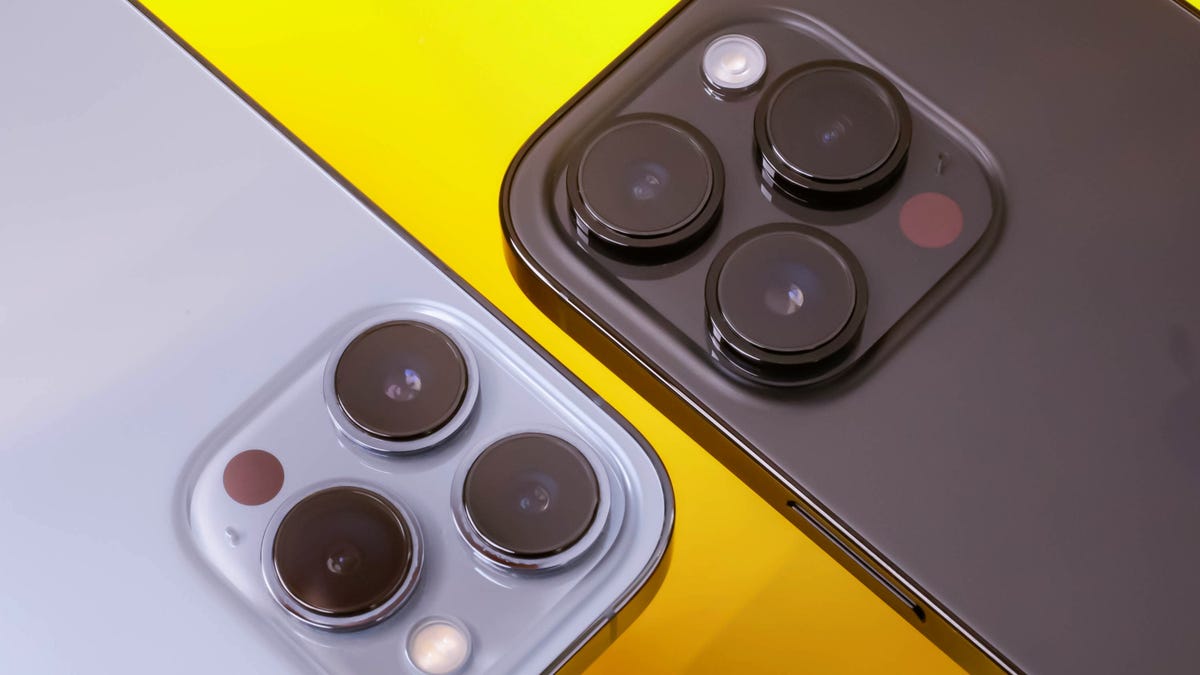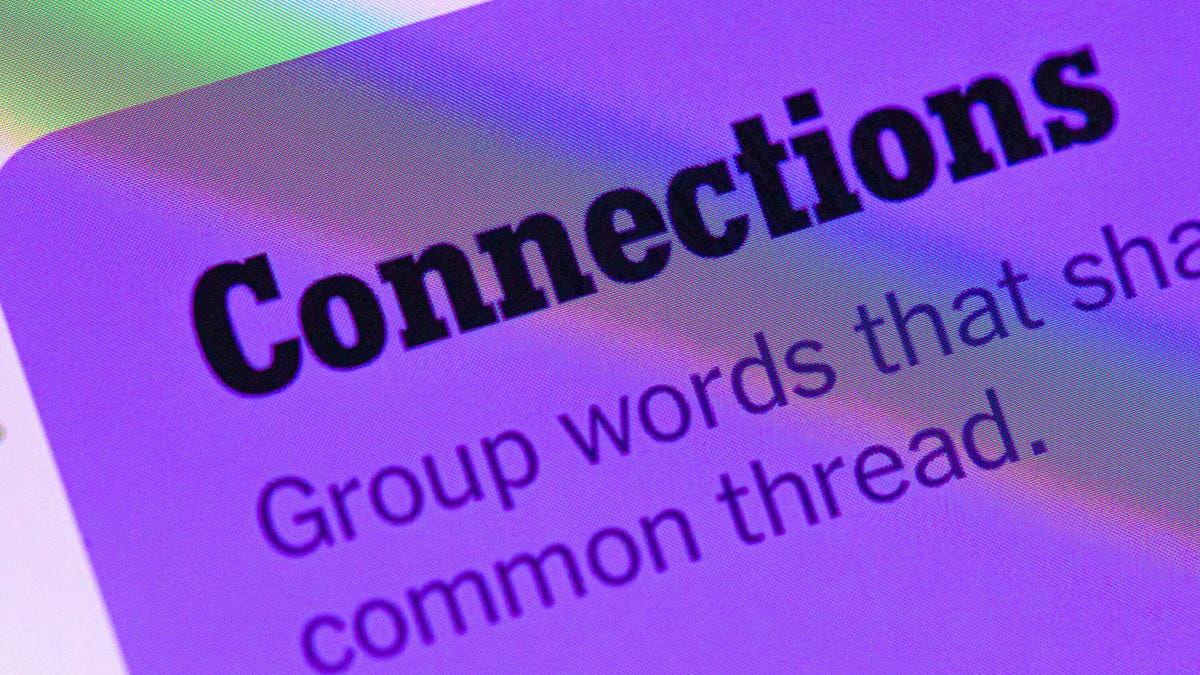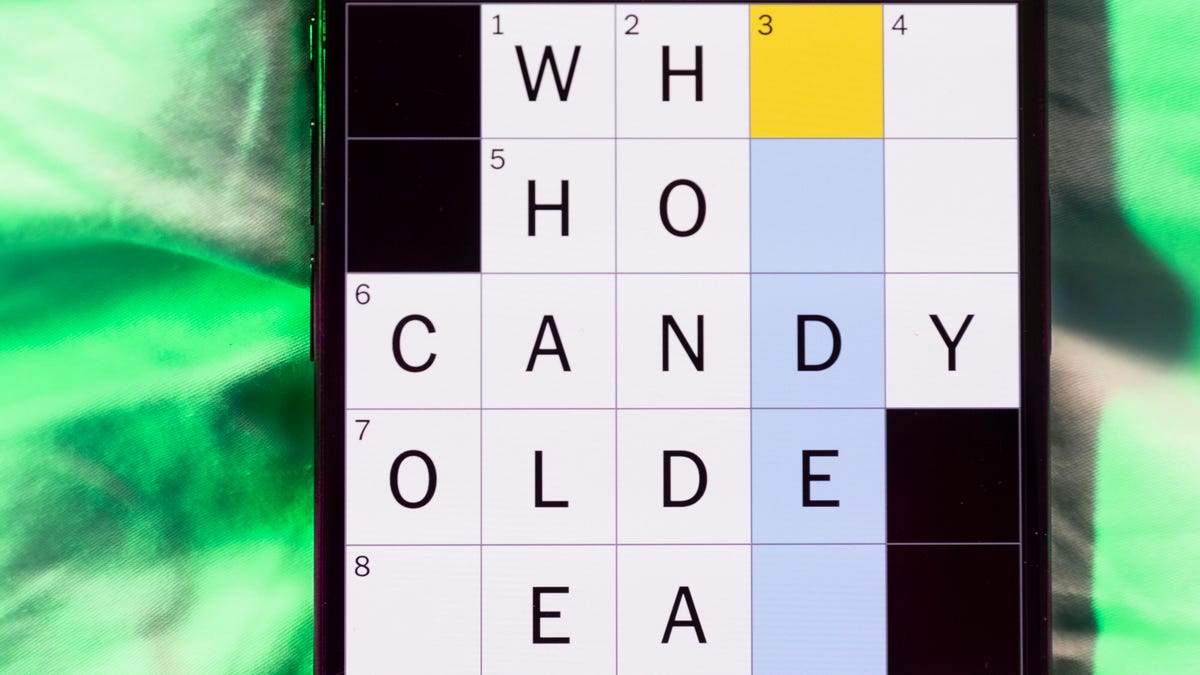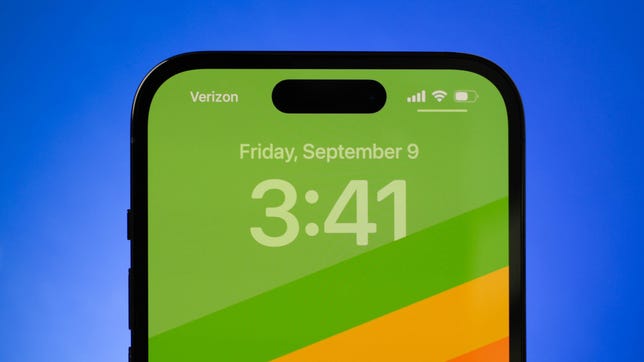Technologies
iPhone 14 Pro and 14 Pro Max Review: Welcome to Apple’s Dynamic Island
Apple upgraded its new Pro iPhones in ways both large and small without raising the price.

This story is part of Focal Point iPhone 2022, CNET’s collection of news, tips and advice around Apple’s most popular product.
Editors’ Note: The iPhone 14 Pro and 14 Pro Max come with improved cameras, iOS 16, the fastest phone processor we’ve ever tested, and an upgraded yet familiar design. Features like the Dynamic Island and Emergency SOS via Satellite make the 14 Pro and 14 Pro Max some of the best phones you can buy in 2022, which is why they received a CNET Editors’ Choice Award. The original review follows.
Apple’s iPhone 14 Pro and Pro Max may look identical to last year’s iPhone 13 Pro on the back, but don’t let that fool you. It’s the iPhone 14 Pro’s screen where there’s something different and wonderful going on. The iPhone’s display notch, which has defined Face ID iPhones since 2017’s iPhone X, has been replaced with a pill-shaped screen cutout that houses an upgraded TrueDepth camera system. On its own, that cutout will make some people happier than the notch did. But it’s the space around the cutout, which now shows system alerts and background activities, that’s become one of my favorite features.
Apple calls it the Dynamic Island, and it enlarges and shrinks when you receive a call and to display the music you’re playing, timers and other notifications. I know it’s not the best name, but it’s truly one of the best features on the iPhone 14 Pro and 14 Pro Max.
Like
- The Dynamic Island is delightful
- Main camera takes excellent photos
- A16 Bionic chip is blazing fast
Don’t Like
- Telephoto camera is only good in bright light
- Wish there was an easier way to simplify the always-on display
- Both phones are hefty
The new Apple phones also get upgraded cameras, a faster processor, an always-on display and iOS 16 as well as new safety features including Crash Detection and Emergency SOS via Satellite.
The 6.1-inch iPhone 14 Pro starts at $999 ( 1,099, AU$1,749) and the 6.7-inch 14 Pro Max at $1,099 — which are the same prices as 2019’s iPhone 11 Pro and 11 Pro Max. After spending some time with the phones, I think they’re worth every penny.
The new Pros come in space black, gold, silver and deep purple — which, depending on the light, can look like a drab shade of gray or like Grimace purple. The iPhone 14 Pro and 14 Pro Max go on sale Friday, Sept. 16, and are currently available for preorder.
How iPhone 14 Pro’s Dynamic Island works
There are few external ways that the iPhone 14 Pro is different from previous models. There’s the aforementioned display cutout. The camera bump is a skosh chunkier. And, like the iPhone 14, US models lack a SIM card tray and instead use an eSIM.
But it’s that strangely named Dynamic Island that defines the phone. The more time I spent with the 14 Pro, the more delightful I found it. It works in numerous situations and is an easy way to see what’s going on without pulling your attention completely away from what you’re doing.
The Dynamic Island is interactive. For example, if music is playing, a miniature waveform and tiny thumbnail of the album artwork appears on either side of the cutout. When you tap either side, Spotify brings up the song that’s currently playing. If you’re on a FaceTime call, you can tap and hold on the interface to bring up controls.
You can tap directly on the TrueDepth cameras or off to the sides. In my time using it, I didn’t notice any smudges accumulating over the selfie camera and Face ID didn’t seem to be affected.
If you have more than one background activity in progress, like maybe you’re listening to music and have a timer on, the Dynamic Island splits into two parts like a sideways lower-case letter i.
The iPhone 14 Pro and the Dynamic Island are an excellent example of Apple packaging a powerful tool into an enjoyable interface. It’s a shame you can only use it on the iPhone 14 Pro and 14 Pro Max. Such a fun and approachable feature is bound to be a big hit with people who don’t use Pro versions of the iPhone.
iPhone 14 Pro has an always-on display
The iPhone 14 Pro runs on iOS 16, which adds a bunch of welcome features including new ways to customize your lock screen. But there’s one lock screen feature reserved for the 14 Pro and 14 Pro Max: an always-on display.
The always-on display is a low-power version of your lock screen that can show essential information when your phone is locked. Most Android phones have had the feature for years, but Apple’s implementation might be the most gorgeous one yet.
The 14 Pro’s always-on display shows the time, date, your widgets, notifications and shaded-out version of your lock screen’s wallpaper. Depending on how your lock screen is set up, it can look vastly different when it’s shown as an always-on display. I had fun auditioning different lock screen combinations of wallpaper and widgets to see how they’d look. The color wallpaper is also the biggest difference Apple’s always-on display makes from Android phones, which typically just light up the time and notifications in monochrome.
Seeing my iPhone 14 Pro sitting on a table with its screen on took some getting used to. I kept thinking that I’d forgotten to lock it. To wake, just tap the screen or unlock the phone.
When the 14 Pro is faced down, in a pocket, in a bag or near another Apple device that you’re using, it doesn’t turn on. Also, there’s an option in Settings to turn it off completely.
I wish there was an option to make the always-on display look more discreet and, for example, just show the time and date. Technically, you could probably set a black wallpaper as your lock screen and only select the date and time for a more minimal always-on display. Visually, the 14 Pro’s always-on display has a lot going on which I found distracting when my phone was face-up next to me.
Taken in total, the Dynamic Island, the new lock screen layout and the always-on display make the 14 Pro the most approachable iPhone for managing alerts and notifications. And I imagine that experience will only get better once live activities for the lock screen in iOS 16 is available in full. (The live activities feature displays real time updates from apps on your lock screen, so you can track the progress of a rideshare or follow the score of a sporting event.)
iPhone 14 Pro camera
The iPhone 14 Pro has three rear cameras: a main wide-angle camera, an ultrawide and a telephoto camera with 3x optical zoom. The lens on the main camera has a wider focal length, going from a 26mm equivalent on previous iPhone models to a 24mm one. It’s not drastically different, but it helps get more of the scene into the frame.
The main camera also gets a new larger 48-megapixel sensor. While more megapixels doesn’t necessarily mean better photos, Apple divides the pixels into groups of four and combines them into one larger pixel. The result is a 12-megapixel photo that’s brighter, has less image noise and better detail.
The main camera takes excellent photos: The image quality and details are great for a phone. I noticed the most improvement is in medium and low-light situations: Colors look good and textures are great. Check out the photo below, which I took on a foggy morning in San Francisco. Notice the textures in the buildings’ bricks and the gradual way the 14 Pro captured the fog engulfing the top of Salesforce Tower.
The photo below was shot under a palm tree’s dark canopy. The 14 Pro did a solid job of capturing the different textures in the leaves and bark while also boosting the brightness.
If you’re so inclined, you can capture 48-megapixel photos using the phone’s ProRaw setting. I should warn you that these files are big. The file for the photo below of the Bay Bridge at sunset is 48 megabytes. After editing, the photo is saved as a much smaller JPEG. Look closely at the details of the cars and the bridge’s support cables.
The ultrawide camera gets a new sensor with more focus pixels and a stepped-down f2.2 aperture lens. All this adds up to much sharper ultrawide photos. The sensor — combined with Apple’s revamped photo processing, which it calls the Photonic Engine — gives you much better photos in less ideal situations.
Ultrawide photos and videos are still a step down compared to those from the main camera, but these improvements are welcomed.
Macro photos also get a boost. When you try to take a photo with the main camera when standing close to a subject, the iPhone 14 Pro switches to the ultrawide camera and crops the framing to mimic the main camera. This allows for a closer focus, which is great for close-up shots of small things. Last year’s 13 Pro had a similar feature, but with the new ultrawide, macro photos have better image quality, especially in medium and low light.
The telephoto camera is basically identical to the one on last year’s 13 Pro, but gets a lift from the 14 Pro’s Photonic Engine processing. As with the ultrawide, image quality is a step behind the main camera — especially in dimmer environments.
The TrueDepth camera got an upgraded lens with a brighter f1.9 aperture. And the selfie camera has autofocus for the first time ever, which works great for group selfies. Here are some more photos that I took with the iPhone 14 Pro and 14 Pro Max.
Cinematic mode can now record in 4K and at 24 frames per second. There’s a new video image stabilization tool called Action mode. When you shoot a video you can toggle it on and the phone crops in a bit to keep the image centered and the horizon level. If you’re shooting in 4K, Action mode drops the resolution to 2.8K but the results are still impressive. While other phones, like the Galaxy S22 Ultra, have similar stabilization functions, it’s wonderful to see the tool come to the iPhone. And it works across all three rear cameras.
While testing video shot with and without Action mode, I was reminded how good the image stabilization is in regular video mode. Check out the video below to see the clips I shot with the iPhone 14 Pro and 14 Pro Max.
iPhone 14 Pro speed
Driving all these upgrades is Apple’s new A16 Bionic chip. In use, everything feels peppy. Gaming is an absolute delight. And subtle things, like animations as you move in and out of the Dynamic Island, are super smooth. In our benchmark tests, the iPhone 14 Pro and 14 Pro Max proved that they’re not only faster than any iPhone we’ve ever tested, but they’re the fastest phones you can buy today.
Check out our benchmark test results below.
iPhone 14 Pro battery
The regular 14 Pro’s battery had no problem making it through a day. I typically got 6 hours of screen-on time. With the 14 Pro Max, I was able to consistently get a day and a half on a single charge.
Charging is OK. I charged the 14 Pro Max for 30 minutes and the battery went from 14% to 59%. The 14 Pro went from 51% to 84%.
iPhone 14 Pro vs. iPhone 13 Pro, 12 Pro, 11 Pro
If you have last year’s iPhone 13 Pro, I don’t think you should upgrade. While the improvements and new features have a lot of sizzle, you aren’t getting a drastically different experience. Upgrade your 13 Pro to iOS 16 and enjoy the new features from that software update instead.
But if you have an iPhone 12 Pro and have the itch to upgrade, the 14 Pro is a sizable step up in terms of performance, battery life, camera quality and additional features like the Dynamic Island.
And if you’re rocking an iPhone 11 Pro or older, the iPhone 14 Pro is a giant upgrade all around.
Technologies
Today’s NYT Connections Hints, Answers and Help for Dec. 24, #927
Here are some hints and the answers for the NYT Connections puzzle for Dec. 24 #927

Looking for the most recent Connections answers? Click here for today’s Connections hints, as well as our daily answers and hints for The New York Times Mini Crossword, Wordle, Connections: Sports Edition and Strands puzzles.
Today’s NYT Connections puzzle is kind of tough. Ooh, that purple category! Once again, you’ll need to look inside words for hidden words. Read on for clues and today’s Connections answers.
The Times has a Connections Bot, like the one for Wordle. Go there after you play to receive a numeric score and to have the program analyze your answers. Players who are registered with the Times Games section can now nerd out by following their progress, including the number of puzzles completed, win rate, number of times they nabbed a perfect score and their win streak.
Read more: Hints, Tips and Strategies to Help You Win at NYT Connections Every Time
Hints for today’s Connections groups
Here are four hints for the groupings in today’s Connections puzzle, ranked from the easiest yellow group to the tough (and sometimes bizarre) purple group.
Yellow group hint: Cash out.
Green group hint: Chomp
Blue group hint: Walleye and salmon.
Purple group hint: Make a musical sound, with a twist.
Answers for today’s Connections groups
Yellow group: Slang for money.
Green group: Masticate.
Blue group: Fish.
Purple group: Ways to vocalize musically plus a letter.
Read more: Wordle Cheat Sheet: Here Are the Most Popular Letters Used in English Words
What are today’s Connections answers?
The yellow words in today’s Connections
The theme is slang for money. The four answers are bacon, bread, cheese and paper.
The green words in today’s Connections
The theme is masticate. The four answers are bite, champ, chew and munch.
The blue words in today’s Connections
The theme is fish. The four answers are char, pollock, sole and tang.
The purple words in today’s Connections
The theme is ways to vocalize musically plus a letter. The four answers are hump (hum), rapt (rap), singe (sing) and whistler (whistle).
Don’t miss any of our unbiased tech content and lab-based reviews. Add CNET as a preferred Google source.
Toughest Connections puzzles
We’ve made a note of some of the toughest Connections puzzles so far. Maybe they’ll help you see patterns in future puzzles.
#5: Included «things you can set,» such as mood, record, table and volleyball.
#4: Included «one in a dozen,» such as egg, juror, month and rose.
#3: Included «streets on screen,» such as Elm, Fear, Jump and Sesame.
#2: Included «power ___» such as nap, plant, Ranger and trip.
#1: Included «things that can run,» such as candidate, faucet, mascara and nose.
Technologies
Today’s NYT Mini Crossword Answers for Wednesday, Dec. 24
Here are the answers for The New York Times Mini Crossword for Dec. 24.

Looking for the most recent Mini Crossword answer? Click here for today’s Mini Crossword hints, as well as our daily answers and hints for The New York Times Wordle, Strands, Connections and Connections: Sports Edition puzzles.
Need some help with today’s Mini Crossword? I’m Irish-American, but yet 6-Down, which involves Ireland, stumped me at first. Read on for all the answers.. And if you could use some hints and guidance for daily solving, check out our Mini Crossword tips.
If you’re looking for today’s Wordle, Connections, Connections: Sports Edition and Strands answers, you can visit CNET’s NYT puzzle hints page.
Read more: Tips and Tricks for Solving The New York Times Mini Crossword
Let’s get to those Mini Crossword clues and answers.
Mini across clues and answers
1A clue: Wordle or Boggle
Answer: GAME
5A clue: Big Newton
Answer: ISAAC
7A clue: Specialized vocabulary
Answer: LINGO
8A clue: «See you in a bit!»
Answer: LATER
9A clue: Tone of many internet comments
Answer: SNARK
Mini down clues and answers
1D clue: Sharks use them to breathe
Answer: GILLS
2D clue: From Singapore or South Korea, say
Answer: ASIAN
3D clue: Large ocean ray
Answer: MANTA
4D clue: ___ beaver
Answer: EAGER
6D clue: Second-largest city in the Republic of Ireland, after Dublin
Answer: CORK
Don’t miss any of our unbiased tech content and lab-based reviews. Add CNET as a preferred Google source.
Technologies
Quadrantids Is a Short but Sweet Meteor Shower Just After New Year’s. How to See It
This meteor shower has one of the most active peaks, but it doesn’t last for very long.

The Quadrantids has the potential to be one of the most active meteor showers of the year, and skygazers won’t have long to wait to see it. The annual shower is predicted to reach maximum intensity on Jan. 3. And with a display that can rival Perseids, Quadrantids could be worth braving the cold to see it.
Don’t miss any of our unbiased tech content and lab-based reviews. Add CNET as a preferred Google source.
The show officially begins on Dec. 28 and lasts until Jan. 12, according to the American Meteor Society. Quadrantids is scheduled to peak on Jan. 2-3, when it may produce upwards of 125 meteors per hour. This matches Perseids and other larger meteor showers on a per-hour rate, but Quadrantids also has one of the shortest peaks at just 6 hours, so it rarely produces as many meteors overall as the other big ones.
The meteor shower comes to Earth courtesy of the 2003 EH1 asteroid, which is notable because most meteor showers are fed from comets, not asteroids. Per NASA, 2003 EH1 is a near-Earth asteroid that orbits the sun once every five and a half years. Science posits that 2003 EH1 was a comet in a past life, but too many trips around the sun stripped it of its ice, leaving only its rocky core. The Earth runs through EH1’s orbital debris every January, which results in the Quadrantids meteor shower.
How and where to see Quadrantids
Quadrantids is named for the constellation where its meteors appear to originate, a point known as the radiant. This presents another oddity, as the shower originates from the constellation Quadrans Muralis. This constellation ceased to be recognized as an official constellation in the 1920s and isn’t available on most publicly accessible sky maps.
For the modern skygazer, you’ll instead need to find the Bootes and Draco constellations, both of which contain stars that were once a part of the Quadrans Muralis. Draco will be easier to find after sunset on the evening of Jan. 2, and will be just above the horizon in the northern sky. Bootes orbits around Draco, but will remain under the horizon until just after 1 a.m. local time in the northeastern sky. From that point forward, both will sit in the northeastern part of the sky until sunrise. You’ll want to point your chair in that direction and stay there to see meteors.
As the American Meteor Society notes, Quadrantids has a short but active peak, lasting around 6 hours. The peak is expected to start around 4 p.m. ET and last well into the evening. NASA predicts the meteor shower to start one day later on Jan. 3-4, so if you don’t see any on the evening of Jan. 2, try again on Jan. 3.
To get the best results, the standard space viewing tips apply. You’ll want to get as far away from the city and suburbs as possible to reduce light pollution. Since it’ll be so cold outside, dress warmly and abstain from alcoholic beverages, as they can affect your body temperature. You won’t need any binoculars or telescopes, and the reduced field of view may actually impact your ability to see meteors.
The bad news is that either way, the Quadrantids meteor shower coincides almost perfectly with January’s Wolf Moon, which also happens to be a supermoon. This will introduce quite a lot of light pollution, which will likely drown out all but the brightest meteors. So, while it may have a peak of over 100 meteors per hour, both NASA and the AMS agree that the more realistic expectation is 10 or so bright meteors per hour.
-

 Technologies3 года ago
Technologies3 года agoTech Companies Need to Be Held Accountable for Security, Experts Say
-

 Technologies3 года ago
Technologies3 года agoBest Handheld Game Console in 2023
-

 Technologies3 года ago
Technologies3 года agoTighten Up Your VR Game With the Best Head Straps for Quest 2
-

 Technologies4 года ago
Technologies4 года agoBlack Friday 2021: The best deals on TVs, headphones, kitchenware, and more
-

 Technologies4 года ago
Technologies4 года agoVerum, Wickr and Threema: next generation secured messengers
-

 Technologies4 года ago
Technologies4 года agoGoogle to require vaccinations as Silicon Valley rethinks return-to-office policies
-

 Technologies4 года ago
Technologies4 года agoOlivia Harlan Dekker for Verum Messenger
-

 Technologies4 года ago
Technologies4 года agoiPhone 13 event: How to watch Apple’s big announcement tomorrow

